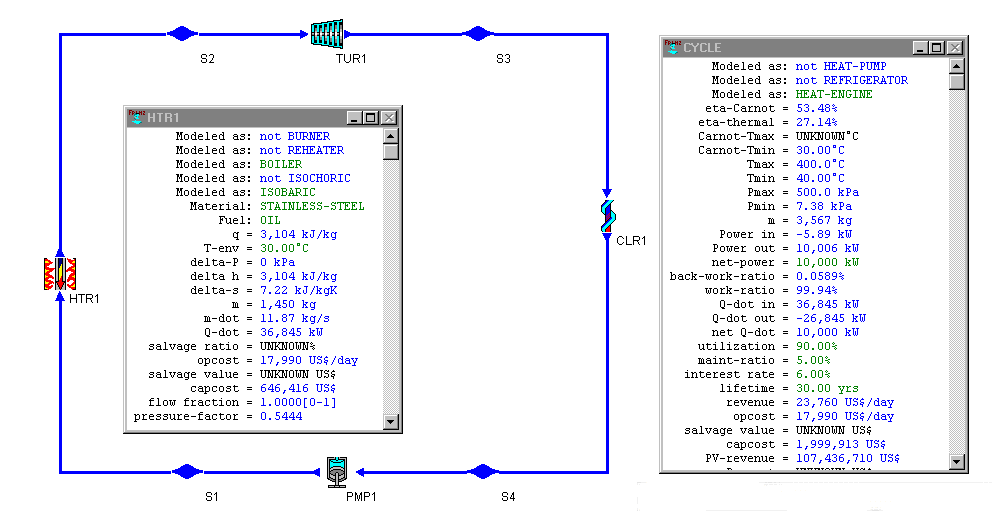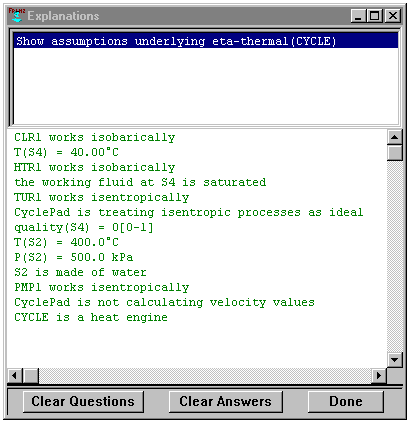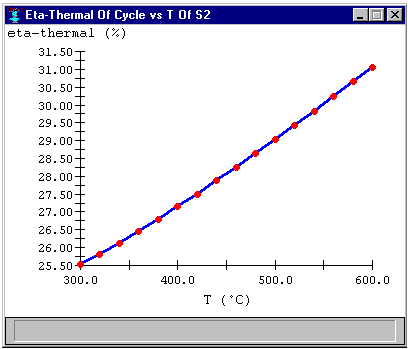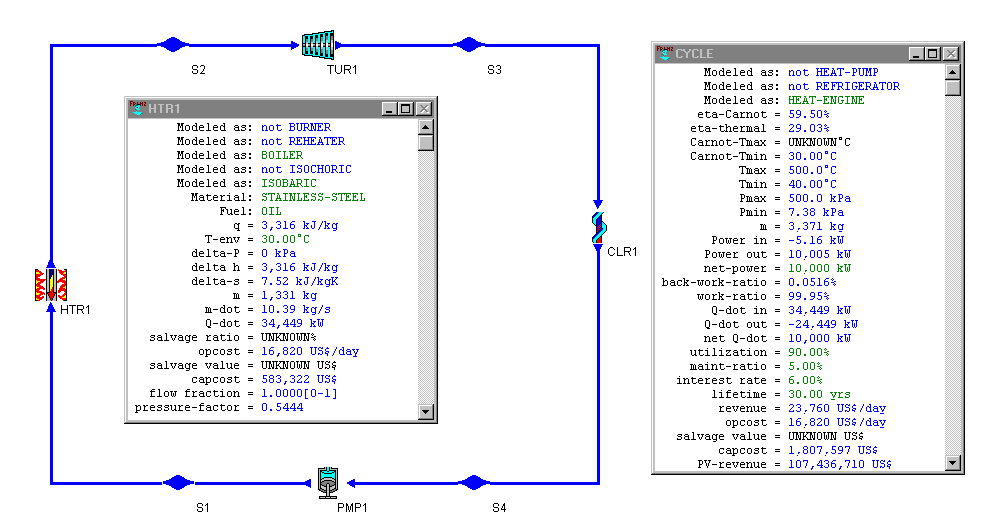
CyclePad
Design Library

 |
CyclePad |
 |

Figure 1: A Rankine Cycle power plant that could use improvement
The Rankine Cycle in Figure 1 is a simple power plant design. The thermal efficiency is a little over 27%, which is very reasonable, but it is possible to do better. The assumptions that the thermal efficiency depend on are shown in Figure 2.

Figure 2: Assumptions that thermal efficiency depends on in this cycle
The operating temperature of the boiler is one of the key parameters in a power plant. By using the sensitivity analysis tool, we can see in Figure 3 that increasing the temperature will lead to an increase in thermal efficiency.

Figure 3: How thermal efficiency varies with boiler temperature
While in principle one can keep raising the operating temperature forever, in practice the material that the boiler is made of sets an upper bound on how high this temperature can be. We can safely raise the boiler temperature to 500 degrees without changing the boiler from stainless steel to something more expensive. Figure 4 shows the result of making this change. Notice that this change raises the thermal efficiency by a little less than 2%, which may not seem like that much. However, notice that this would result in a decreased estimating operating cost of $1,170 US$/day, which would be a substantial savings.

Download the CyclePad design of the lower-temperature Rankine cycle from here, and the higher-temperature Rankine cycle from here.
Rankine Cycle
Whalley, P.B. 1992. Basic Engineering Thermodynamics. Oxford University Press. ISBN: 0-19-856255-1
Contributed by: Kenneth D. Forbus
Initial Entry: 11/9/97
Last Edited: 11/9/01
For comments or suggestions please contact CyclePad-librarian@cs.northwestern.edu